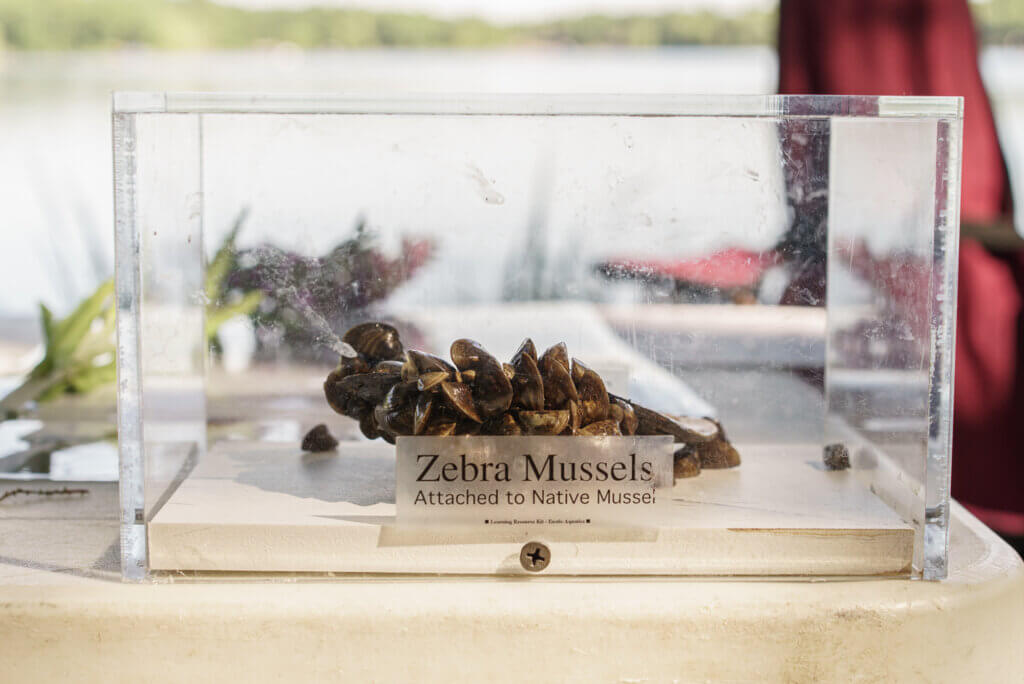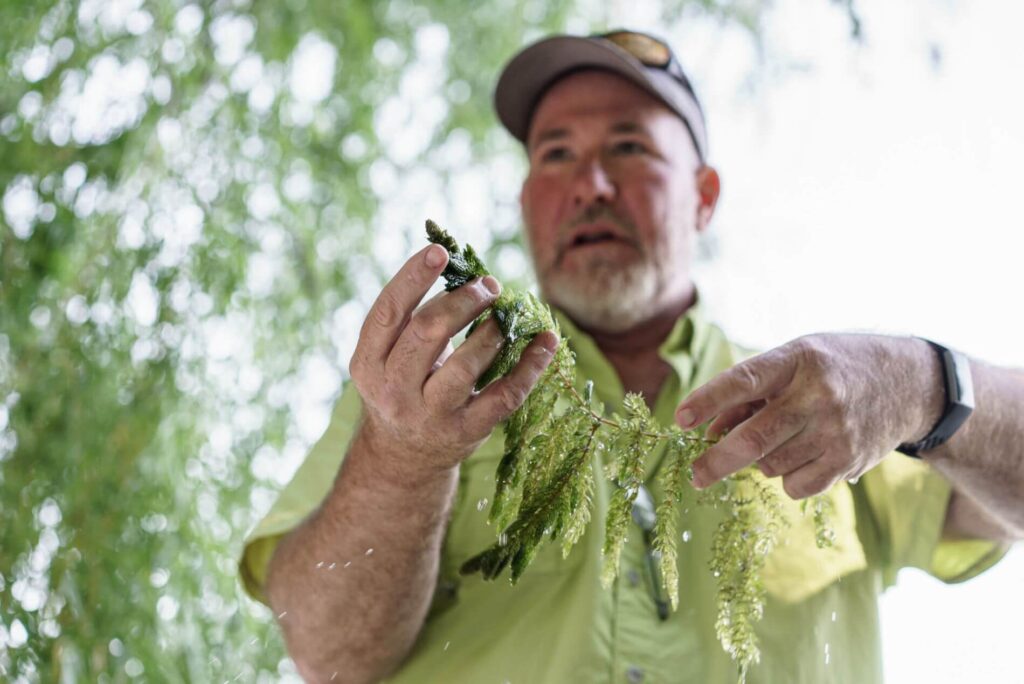Environmental Preservation
Now is the time to stop zebra mussels
- Amelia Foster
- September 7, 2021
Aquatic invasive species — or AIS — include a wide range of animals, plants, and diseases. One species of particular concern in Minnesota is zebra mussels: small D-shaped shells that grow no bigger than a thumbnail. Zebra mussels are native to eastern Europe and western Russia—and they were first detected in Minnesota in the late 1980s. A single female can produce 100,000 to 500,000 eggs per year, resulting in explosive population growth wherever the mussels are found.
Fewer than 2% of Minnesota lakes currently have zebra mussel infestations. Among environmental professionals, there’s a sliver of hope that increased education on the importance of prevention can help stop the spread. “Once zebra mussels are in a lake, there’s literally nothing you can do about it. There is no treatment that works,” says Angie Hong, Water Education Senior Specialist at the Washington Conservation District.

At this time, only four of the 250 water bodies in Washington County are known to have zebra mussel infestations. However, over the summer, watercraft inspectors stopped four different boats with zebra mussels attached from entering Big Marine Lake, a currently healthy lake. Anything that moves from one body of water to another, such as a bait bucket, a boat, or diving gear, could transport zebra mussels into an uncontaminated lake, making now the time for a concerted effort to educate.
Zebra mussels are harmful to native species, and they’re a huge problem for swimmers and boaters. They reside on hard surfaces such as docks, stones, or the shell of another mussel, encrusting boat hulls, clogging water intakes, and cutting the feet of swimmers and pets. Each one of these tiny creatures filters up to a quart of water per day, stripping the water of tiny zooplankton that fish and other animals depend on for food.
Prevention is Key
Lakes with public access may be at higher risk of zebra mussel infestation because people using those boat launches are more likely to move their boats between different bodies of water. Boaters are probably familiar with the message: “Clean, Drain, Dry.” It’s law in Minnesota that boaters must completely clean, drain, and dry all watercraft when moving between different lakes and rivers and dispose of unused bait in the trash. It’s recommended to allow watercraft to dry for five days before entering a new lake. These practices help reduce the risk of spreading invasive species such as zebra mussels.
It might be less commonly known exactly why it’s so important to thoroughly clean and dry watercraft. Baby zebra mussels, called veligers, are microscopic in size, and they could hitch a ride from one lake to another in a single droplet of water. That kind of invisible threat makes zebra mussels a particularly challenging problem. The vast majority of boaters comply with regulations, but just one boater’s failure to thoroughly clean their equipment can spell disaster for a lake.

Dock installation companies are a potentially under-recognized source of zebra mussel infestations. Since these professionals move between lakes in quick succession, they could easily and unknowingly promote the spread of zebra mussels. In fact, the MN DNR confirmed that many recent zebra mussel infestations could be traced back to docks, not boats. If you hire help with a dock as the seasons change, make sure the company has completed the AIS training and is listed as one of the DNR’s Permitted Lake Service Providers.
Volunteer AIS Detectors
With thousands of lakes to monitor across the state, conservation professionals can only do so much. Volunteers and citizen scientists help fill the gap. Link Lavey lives on the shore of Lake De Montreville, and he takes pride in being out on the lake every day, whether it’s on a paddle board, kayak, or pontoon. When he retired, he became president of his local lake association. He’s motivated to protect the lake from aquatic invasive species, and in addition to his work with the lake association, he serves as a volunteer AIS Detector.

The University of Minnesota AIS Detector Program instructs volunteers on aquatic ecology and how to distinguish between native and non-native species. Once certified, these volunteers serve as ambassadors in their communities, talking with friends and neighbors, and watching for potential new infestations.
Dedicated volunteers such as Link work hard to ensure that our lakes are safe and healthy for all to enjoy. Ever since the pandemic hit, he has seen a big increase in use of the lake as more people turn to outdoor recreation. He hopes some of these new enthusiastic boaters see the value of protecting the lake for future generations.
Take a look at the apps iNaturalist and EDDMapS to report on invasive species in your local waterways. You can also directly report invasive species sightings to the MN DNR.
Want exclusive access to our content?
Join hundreds of subscribers today by signing up for our mailing list. You'll receive exclusive tips, guides, news and much more! Sign up now and learn how to keep your water clean!
